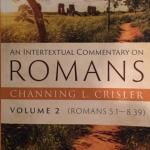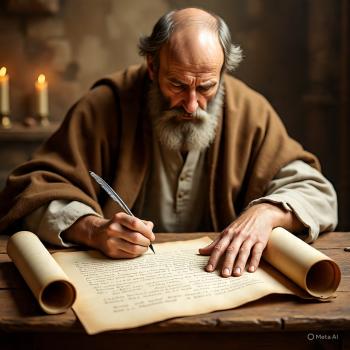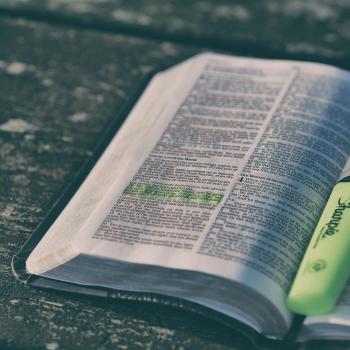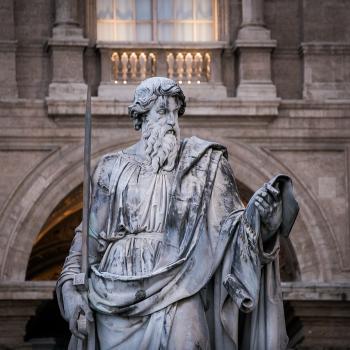Among the many discoveries in the Dead Sea Scrolls is the Book of Giants. This book never made the cut when it came to entering the biblical canon. It appears to be dependent on Genesis 6:1-4 and 1 Enoch 6–11 (the Book of Watchers).

Scholars disclose some interesting facts about the Book of Giants. Here are 5 that you should know:
1. The Book of Giants is an ancient writing comprised of fragmented documents pieced together from the Dead Sea Scrolls
Fragments of this book were collected from the caves of Qumran near the Dead Sea, where a Jewish community, arguably the Essenes, lived and worshipped together during the time of Jesus Christ and decades prior.
These fragmented documents, written in Aramaic, are numbered according to the caves in which they were discovered: 1Q23, 2Q26, 4Q203, 4Q206a, 4Q530, 4Q531, 4Q532, 4Q533, 6Q8; possibly 1Q24. The oldest of these dates back to about 100 BCE.
The Book of Giants circulated beyond the Qumran community; it is found in Manichean literature of later centuries (cf. Kelley Coblentz Bautch and Jack Weinbender, “Authoritative Scriptures: Other Texts” in T. & T. Clark Companion to the Dead Sea Scrolls, 2019:280–285 [282]).
The book is not to be confused with the Genesis Apocryphon, another Dead Sea Scrolls document that relays some interesting things about Noah, Abraham, and Sarah. In it, Noah’s father, Lamech, wonders if Noah is one of the Nephilim and asks his wife Bitenosh whether a Watcher had impregnated her. She reassures him that Noah is his own son from their own sexual encounter (1QapGen II). This story perhaps has ties with the Book of Noah (1 Enoch 106–107). In the latter, Lamech is disturbed by the angelic brightness of Noah’s body at his birth.
2. The Book of Giants focuses on the over-sized offspring of the Watchers
According to the ancient story, the giants (sometimes called Nephilim) are the offspring of the Watchers, the so-called angelic “sons of God” who reportedly had sex with earth women based on a popular interpretation of Genesis 6:1–4.
Other ancient literature also mentions the giants: for example, in the Apocrypha, see Sirach 16:7; Wisdom 14:6; 3 Maccabees. 2:4; and in the Pseudepigrapha, apart from 1 Enoch, see Jubilees 5–10, 3 Baruch 4:10; Sibylline Oracles 2.225–232. However, as one scholar puts it, the Book of Giants is “the only one known to focus entirely on these figures [the giants] and their exploits and to be narrated from their perspective. The work’s interest in the malevolent acts of the giants on earth in the days before the great flood as well as the elevated role attributed to the patriarch Enoch in the revelation of divine judgment mark it as belonging to early Enochic lore” (Joseph L. Angel, “Book of Giants” in Encyclopedia of Second Temple Judaism, 1:220–23 [quote on 221]).
3. The Book of Giants actually gives names to some of the giants
Specific names of the Ante-diluvian giants are given, such as Ahiram, Hahyah, Mahaway, and Ohyah. We also find a more famous giant mentioned…
4. The book mentions Gilgamesh
The hero Gilgamesh, from the famous Ancient Near Eastern myth, The Epic of Gilgamesh, is mentioned as one of the giants (4Q530 f2ii+6–12(?):2). That epic centers on the hero attempting to gain eternal life by meeting Utnapishtim (the Noah figure), survivor of the Great Flood.
5. Some interesting content from the Book of Giants includes the following:
- It records the birth of the giants as well as the demise of their fathers, the Watchers.
- The giants are characterized as violent towards humans and the things of nature.
- There are petitions made by human souls and Enoch to God regarding the giants. (Enoch is the one who walked with God and was not because the Lord took him: Genesis 5:21–24. Legend has it that he wrote 1 Enoch).
- The giants have dreams or visions. One dream has to do with the “ruler of heaven” coming to earth, setting up thrones, and apparently making judgments with books opened.
- One of the giants, Mahaway, travels to see Enoch for the interpretation.
- An oracle from Enoch, the first tablet, is read before the giants, which denounces them along with their fathers.
- Another giant, Ohyah, speaks to Gilgamesh regarding a dream he had.
- There is a divine throne scene that parallels Daniel 7:9–10,17 (see 4Q530 2 ii 16-20).
- The giants fight among themselves.
- Giants, “Nephilin,” and Azazel, one of the Watchers, are imprisoned.
- Enoch’s second tablet declares judgment against the giants and Watchers.
- The giants Ohyah and Hahyah have more dreams, and Mahaway travels to see Enoch for the interpretation (once again).
- There is mention of Mt. Sinai, and a burning apparently of the “sons of …” on a day of calamity.
For more of its content, some of which was adopted here, see Loren T. Stuckenbruck, “The Book of Giants among the Dead Sea Scrolls” Ancient Tales 2016: 129–41; Joseph Angel, “Giants,”; and Joseph Angel, “Reading the Book of Giants in Literary and Historical Context,” Dead Sea Scroll Discoveries 21 (2014) 313–46.
Conclusion
Since the Book of Giants is fragmentary, many of its scenes are not clear, and we do not know how it ends. It will not be entering the canon of the Old Testament anytime soon, nor is there any reason to think it was ever considered a nominee. Imaginative elaborations on the stories of Genesis are quite common in ancient Jewish literature.














